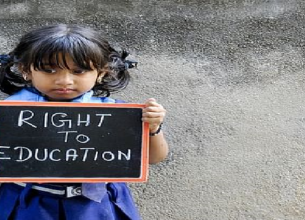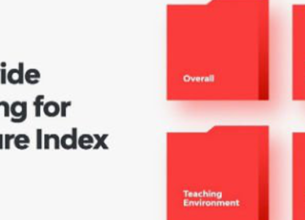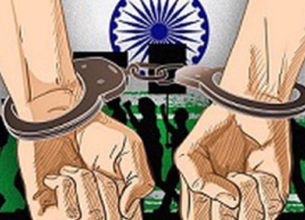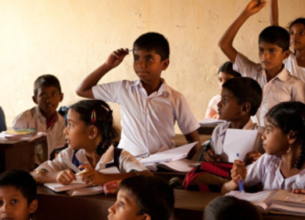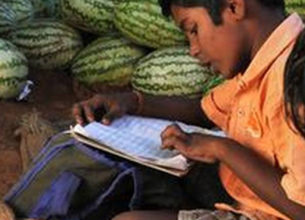CHILD LABOUR
02, Jul 2019

Prelims level : Governance
Mains level : Welfare schemes for vulnerable sections of the population by the Centre and States and the performance of these schemes; mechanisms, laws, institutions and Bodies constituted for the protection and betterment of these vulnerable sections.
Context:
- Instances of child labour detected during inspections have reduced successively from 2014 to 2018, figures presented by the government in Lok Sabha show.
- Child labour cases: trend shows decline, govt says will eradicate it
Constitution on Child Labour:
- The Indian Constitution ensures the right of all children (6-14 years) to free and compulsory education and prohibits their employment in hazardous occupations; and promotes policies protecting children from exploitation
Laws Prohibiting Child Labour:
- The Child Labour Act was amended in 2016 and the amendment provides for complete prohibition of work or employment of children below age 14 in any occupation and process and prohibition of adolescents in the age group 14-18 in hazardous occupations and processes.
- The Amendment Act also provides for strict punishment of employers for violation of the Act and has made the offence cognisable.
National Child Labour Project (NCLP)
- Under the scheme, children aged 9-14 are rescued/withdrawn from work and enrolled in NCLP Special Training Centres before being mainstreamed into the formal education system. Children aged 5-8 are directly linked to the formal education system through close coordination with the Sarva Shiksha Abhiyan
What type of Works:
- Engaged in manual work, in domestic work in family homes, in rural labour in the agricultural sector including cotton growing, at glass, match box and brass and lock-making factories, in embroidery, rag-picking, beedi rolling, in the carpet-making industry, in mining and stone quarrying, brick kilns and tea gardens amongst others.
- Gender Specific Work girls performing more domestic and home-based work, boys are more often employed in wage labour.
Factors which lead to Child Labour:
- It is a multi-dimensional problem that involves various reasons contributing to it in a variety of ways. continued poverty, illiteracy and ignorance of poor parents, population explosion-large family size, low family income, the tradition of making children learn the family skill, lack of political will and weak/tardy enforcement of laws, un-employment/under-employment, migration, absence of provision for universal compulsory primary education.
Employers Preference for Child Labour
- The most important objective of the employer is to earn more profit on limited expenditure
National Legislations regarding Child Labour:
- Child Labour (Prohibition and Regulation) Amendment Act, 2016
- National Policy on Child Labour (1987) which focuses upon rehabilitation of such children
- Juvenile Justice (Care and Protection of Children) Act 2015
- India has recently ratified two of the ILO (International Labour Organisation) Conventions on Child labour i.e. o Minimum Age Convention 1993 o Worst forms of Child Labour Convention 1999.
- Child Labour (Prohibition and Regulation) Amendment Act, 2016
- It amends the Child Labour (Prohibition and Regulation) Act, 1986.
- The major amendments include Extends this ban on employment of children under 14 across all sectors, o Prohibits the employment of adolescents aged 14-18 years in hazardous occupations and Introduces more stringent jail term and fines for offenders: a jail term of six months to two years and a fine upto Rs 50,000.
- The Bill adds a new category of persons called “adolescent”. An adolescent means a person between 14 and 18 years of age. The Bill prohibits employment of adolescents in hazardous occupations as specified (mines, inflammable substance and hazardous processes).
- It brings down the list of hazardous occupations from the earlier 83 to just three: mining, inflammable substances, and hazardous processes under the Factories Act, and the centre will decide which processes are hazardous.
- The Act has a provision of creating Rehabilitation Fund has also been made for the rehabilitation of children.
ILO Convention upon Child Labour:
- Recently India ratified the two fundamental ILO Conventions concerning the elimination of child labour,
- India ratify ILO Convention No.138, which requires States party to set a minimum age under which no one shall be admitted to employment or work in any occupation, except for light work and artistic performances.
- Convention No. 182. The latter calls for the prohibition and elimination of the worst forms of child labour, including slavery, forced labour and trafficking; the use of children in armed conflict; the use of a child for prostitution, pornography and in illicit activities (such as drug trafficking); and hazardous work.
Conclusion:
- The phenomenon of child labour is multi-dimensional complex problem and deep rooted in the socio-economic fabric of the society.
- There are many factors responsible to this complex problem, so a comprehensive integrated approach is required to tackle and combat child labour.
- This can be done only by bringing attitudinal change, and social awareness and rigorous campaign against the problem of child labour.
Thus, it requires honest effort and strong commitment and support from all concerned.




